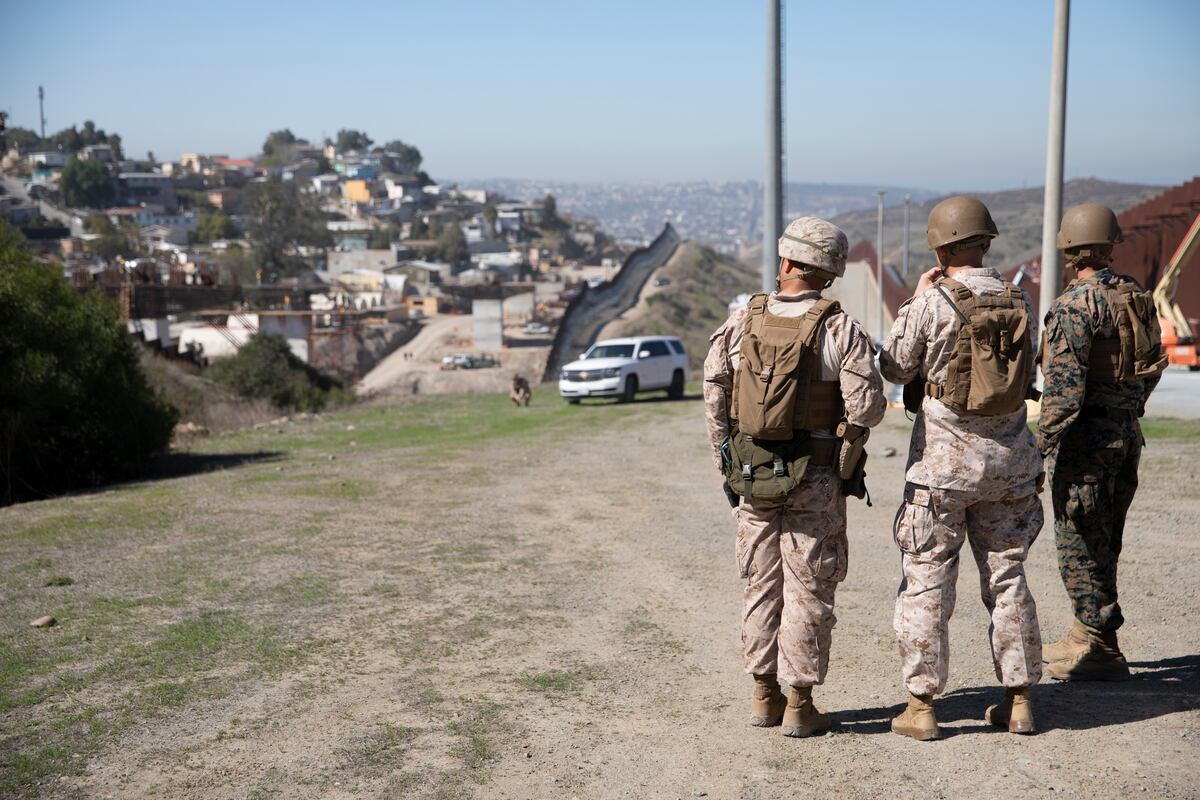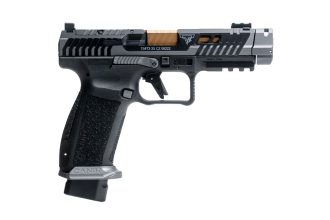On March 15, President Donald Trump invoked the Alien Enemies Act against drug traffickers — a move that has been met with astonishment, particularly since the act originated in 1798 and has rarely been used since — beyond when the United States has been at war.
Although discussions surrounding the act are focusing on its effect on immigration, what is often getting lost in debates is the White House’s argument that drug trafficking constitutes a form of irregular warfare. Similarly, the administration has stirred up controversy by classifying drug traffickers as terrorists.
Can it be the case that drug traffickers are terrorists carrying out a form of irregular warfare — and if so, how could the U.S. military address this at a strategic level?
Can drugs be weapons of war?
The word “terrorism” has taken on new meaning in recent years. Although arguments can be made as to what signifies a terrorist activity, the concept of terrorism is most often associated with those who choose to do harm against civilians through acts of extreme violence or by mass casualty.
The attacks on the USS Cole, the World Trade Center and Benghazi usually come to mind when referring to acts of terrorism. Yet it is the subtle terrorist attacks that often go unnoticed.
The correlation between drugs and terrorist organizations is not new. In fact, most terrorist organizations rely heavily on criminal conduct to support their activities, such as the illicit drug trade, human trafficking, sex trafficking and money laundering. While it is true that illegal drugs finance terrorist and criminal groups, the situation today has changed.
It has become well known that the primary killer of U.S. adults between the ages of 18 and 45 is fentanyl. In 2019 it was reported that fentanyl death rates had risen by over 1,000% within just six years.
Unlike in the past, when the goal of illicit drug trade was to increase profits to fund terrorist attacks, fentanyl not only increases criminal profits but is a means of destruction — harming a large portion of the U.S. population and causing over 100,000 deaths per year. Mexican cartels have been identified as being responsible for the influx of fentanyl into the U.S., which led Trump to designate them as terrorist organizations.
Can drugs like fentanyl accurately be described as weapons of war? Although it may seem surprising, history shows us the answer is often yes.
Organized crime groups have often deliberately flooded drugs into the U.S. with the goal of inflicting mass casualties on civilians. In 2005, Afghan drug lord Haji Baz Mohammed was extradited to the U.S. and convicted after having orchestrated attempts to use heroin as a form of “jihad,” stating that he and his colleagues were “taking the Americans’ money and the heroin was killing them,” according to court documents.
State actors and corruption
Political entities wishing to undermine the United States often have deep ties to the drug trade and use it to cause harm. One example is the conviction and sentencing of Juan Orlando Hernandez, who served as president of Honduras from 2014 to 2022, and was eventually sentenced to 45 years in prison in June 2024 for what U.S. prosecutors described as “state-sponsored drug trafficking.”
The case made history as Hernandez became the first former president sentenced in the U.S. for narcotics trafficking. According to the Justice Department, Hernandez’s co-conspirators benefited not only from political protection but military-style weaponry, including AK-47s, AR-15s and grenade launchers.
Mexico presents a unique challenge in terms of its geographic proximity to the U.S. and its role as a major international trading partner. Due to deep corruption, it has proved problematic in the past for U.S. law enforcement to put a stop to cartel activities affecting American citizens.
Recently, the Mexican government extradited 29 drug lords to the U.S., including Rafael Caro Quintero, a Sinaloa cartel leader responsible for the murder of DEA Special Agent Enrique “Kiki” Camarena in 1985. Camarena was kidnapped, brutally tortured and killed at the hands of the Sinaloa cartel in one of many tragedies experienced by the DEA while it was operating in Mexico for over 40 years.
Quintero evaded justice for decades, a demonstration of the the difficulties of taking on cartels as well as the problem corruption has posed in stifling their illicit activities.
To take on the cartels who are responsible for the deaths of American civilians will take more than military or law enforcement action alone.
The need for joint solutions
While turning its attention to Mexico, the current administration has deployed U.S. military forces to establish control of the border. However, such efforts will require combined experience, knowledge and the integration of expertise beyond the armed forces.
Since the illicit drug trade is a major activity for the Mexican cartels, the model for a solution can be replicated based on the Afghanistan-based partnership between the Defense Department and a foreign-deployed advisory support team, or FAST.
This highly successful joint effort saw the U.S. military work with DEA agents on the ground to target Taliban heroin traffickers. What brought success then was options and the ability to target narco-terrorists through an array of authorities that could be used on the battlefield.
The same concept could be used to address the threats from Mexico by exploiting DOD assets and combining them with DEA expertise. Alongside vetted Mexican authorities, this partnership would yield shared intelligence gathering, training and joint operations.
FAST drew its methodologies from U.S. special operations by merging small unit tactics, operational planning and tactical combat casualty care with DEA’s investigative techniques, evidence processing and handling of informants to create an unprecedented approach to effectively extinguish threats from criminal groups.
In a few short years, FAST became a valuable resource for the Special Operations Command to target Taliban principals and remove terrorist leaders from the battlefield. It remains a partnership highly valued by those who served on DEA’s FAST program.
Although the wars in Iraq and Afghanistan have since ended, the lessons learned from this cooperative approach still hold value. This strategy may be revisited as a method of unconventional warfare aimed at dismantling the most nefarious criminal organizations.
Neither the U.S. military nor federal law enforcement acting alone are enough to deal with the complex problem of cartels. Forging a new partnership between DOD and DEA using the FAST model could prove to be the most efficient solution.
Zita Ballinger Fletcher previously served as editor of Military History Quarterly and Vietnam magazines and as the historian of the U.S. Drug Enforcement Administration. She holds an M.A. with distinction in military history.
Read the full article here








